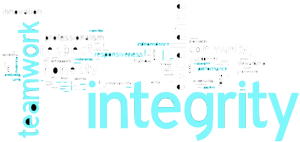The last couple of blogs compiled some ideas around marketing strategies for your enterprise (security) startup. After discussing some of the basics, we then dove a bit into PR. The initial PR post got a bit too long, so in this post I am going deeper on the topic of PR and I’ll provide some tips that I gathered from my marketing maven friends on how you can cost efficiently implement a PR strategy.
Syndication
You might say that all of the content creation PR ideas from the last blog post are great, but what good is a blog without traffic. Well, that’s where you will need to spend a bit of time on syndication. It starts as simple as building up your twitter account and starting to talk about your blog (and some other things to get people to follow you). Exploring Twitter is a whole broad topic on its own: How to tweet, retweet, hashtags, and all that jazz. Let’s focus on syndication for now. Twitter is a good way to announce your posts. So is linkedin (might be even better!), linkedin groups, and don’t forget Facebook for announcing your content.
Here is a pro tip: Tie into Quora and Peerlyst. Answer questions on those properties and link back to you. Or even seed questions on those platforms.
Obviously, the top of the content chain are outlets like Huffington Post, Forbes, Darkreading, TechTarget, Wallstreet Journal, New York Times, etc. Some of them take a bit more to get syndicated or featured in. But start small and expand. Who knows, with a thought leadership approach you might soon get called by CNN to comment on breaking news. You have no idea how much traffic 30 seconds on TV will generate.
On the topic of getting featured in publications. You want to be in Forbes or some other business journal. Start pitching journalists. Find the good ones and start building a relationship. But make sure you have something to add to the journalist’s work. Have a point of view. A differentiated one if possible. A valid one. A provoking one? As an example of how that could look, one of the companies I am working with, they don’t call their technology ‘artificial intelligence’ (AI). They call it an expert system. They can enter the conversation on AI, but can differentiate themselves and make the point that it’s not about algorithms, but about encoding export knowledge in their system. That gets journalist’s attention and helps them formulate a story around your company. But I digress.
Community
When talking to marketing friends, Laura was very passionate about creating communities for her companies as a core pillar of marketing. Identify the biggest community that your company addresses. Do they have a Web portal? Is there an organization that is behind that community? Start contributing to the community, sponsor activities, have them feature you, work with them. Here are some pro tips from Laura on how she does this for the companies she works with:
- Be hip. Be cool. Nobody wants to interact with a boring company.
- Think about how to separate yourself from the pack. How do you associate a certain topic with your company? (Side note: Splunk has done a fantastic job with their T-Shirts. They are everywhere and create an incredible amount of mind share! What’s your unique approach?)
- Make sure there are lead capture areas on the Web site and make sure you get the leads.
- What goes hand in hand with finding and contributing to a community goes identifying journalists that cover your space. Work with them, have them talk about your community.
- Collaborate with a smaller but very focussed conference around your company’s topics; rather than spending a lot of money on a big conference where you might collect a lot, but not very qualified, leads. Focus on quality. More on the topic in the next section.
- Engage with people that are using or are potentially using your product. Rear them in, have them be your extended outreach department.
Trade Shows
Rather than spending a lot of money on one of the big conferences like BlackHat or RSA, use the money to hit a user conference for products that you integrate with. They’re not usually too expensive and they’re better quality attendees because they’re already running a complimentary technology!
I am summarizing some of the other tips here:
- Don’t attend trade shows too early in your company’s life. They have a place, but they are expensive!
- When you are attending smaller shows, be the ‘big dog’ there. Much easier than getting attention at a large conference.
- Always focus on gathering leads at these conferences. Get creative. And please, don’t be annoying.
- Leverage the fact that people are attending the larger trade shows. How can you make use of the fact that a lot of people will be at BlackHat or RSA? Maybe organize a meetup? Organize a smaller dinner for some prospects (add some customers that will talk favorably about your product). Setup one on one meetings with prospects.
- Rather than attending the big conferences, organize smaller dinners. Get a good crew together. People like a free meal with interesting people! Maybe get a good speaker to initiate some conversations. But keep that part short.
Should You Hire a PR Firm?
As Ariella nicely summarizes: If you have a little extra money, hire a great PR firm. They require some attention from your marketing people and your spokes person, but they can potentially add some great value.
To start with, they can help you put together an overall PR strategy with all the components we talked about here. In addition, a good PR agency can help you get bylines and guest blogs with outlets like HuffPo, Dark Reading, NYT, WSJ, etc. They can also help you figure out your messages that resonate with journalists and finally they should have some good contacts to journalists (use that as one of your criteria for selecting a PR firm). If you are going to launch your product, have them help you get the launch featured in the NYT or WSJ!
Be selective when working with a PR firm. Do you want a large firm? Can they guarantee you the attention that you want / need? Or are they just fishing for new clients? Smaller outlets can be better suited there, but they are often a bit more expensive as well. Shop around and find the right fit for you!
What’s Next?
What do you think? Was this useful? Did I miss any big topic on marketing? What else would you want to read here? I got someone asking about product management. Is that of interest?





